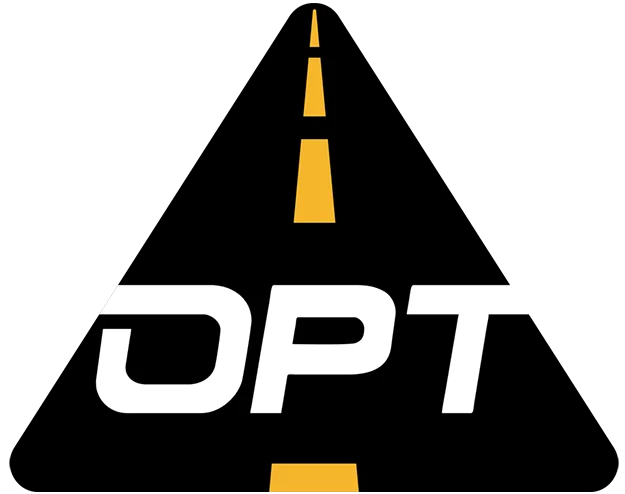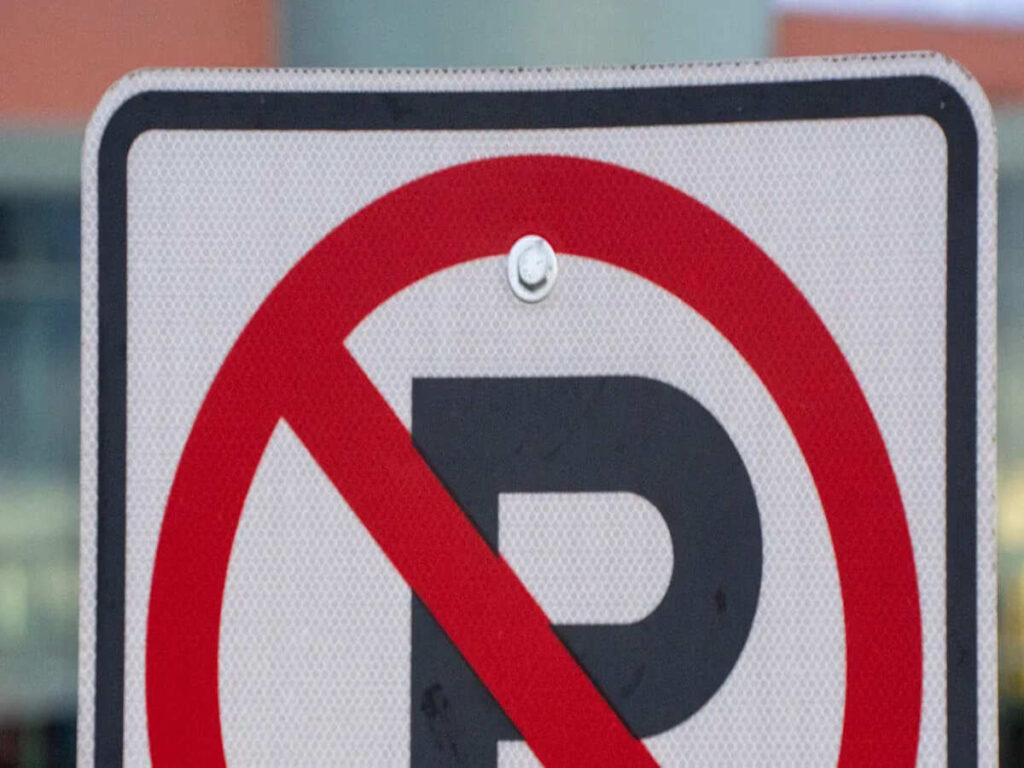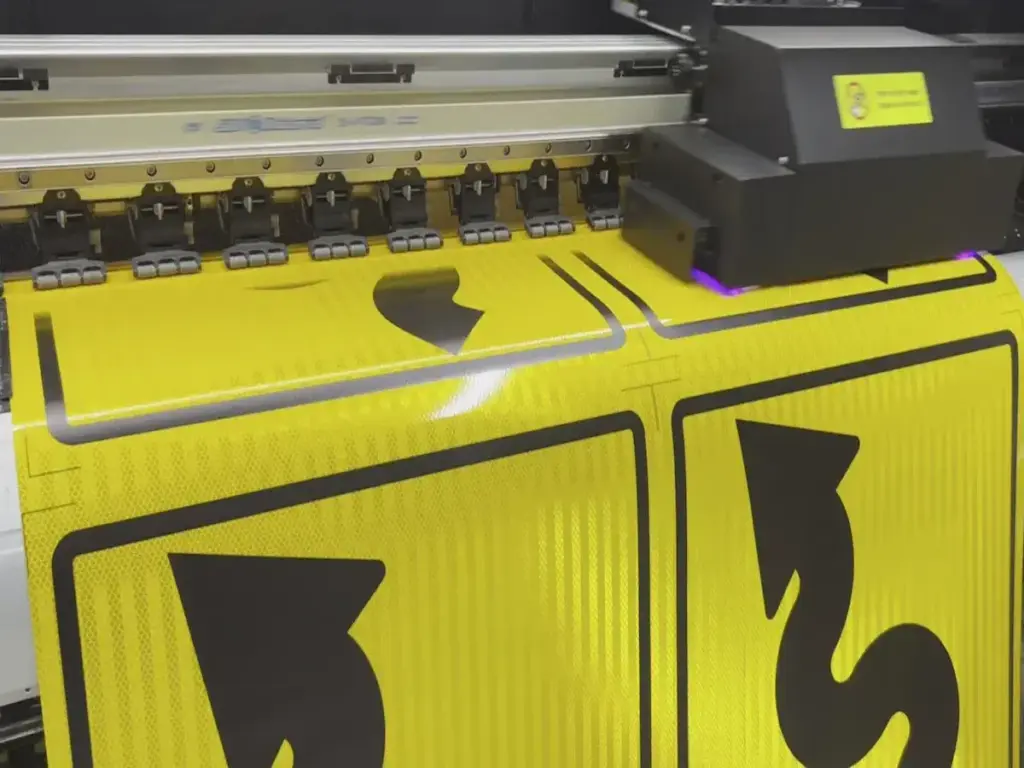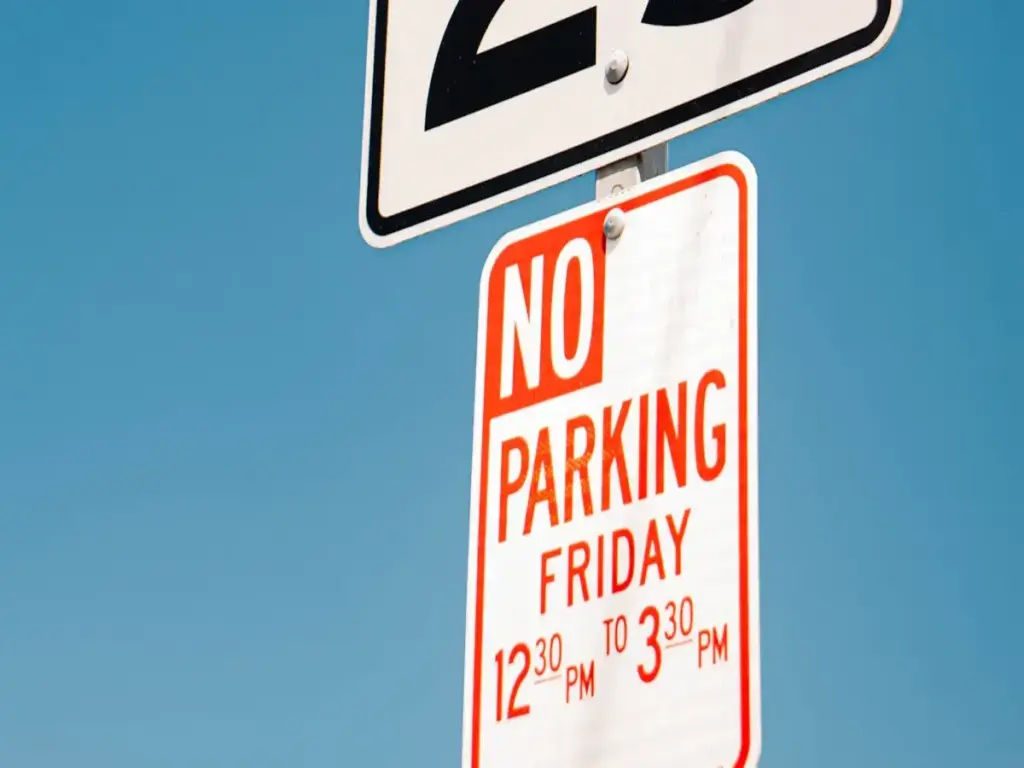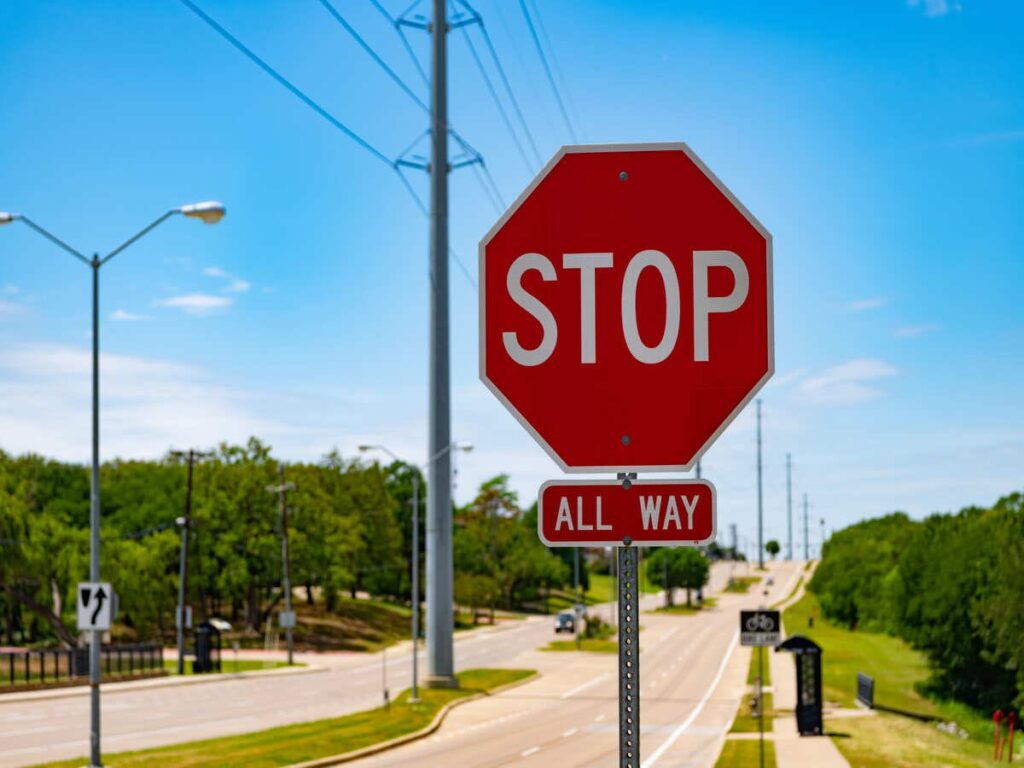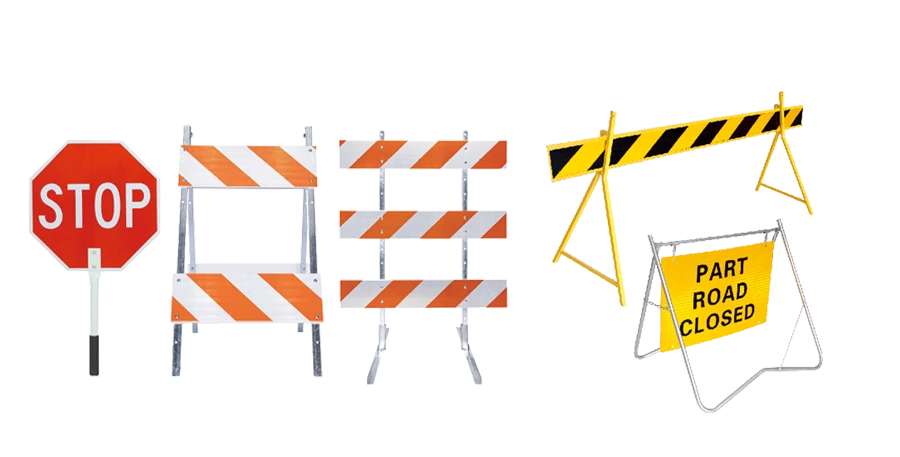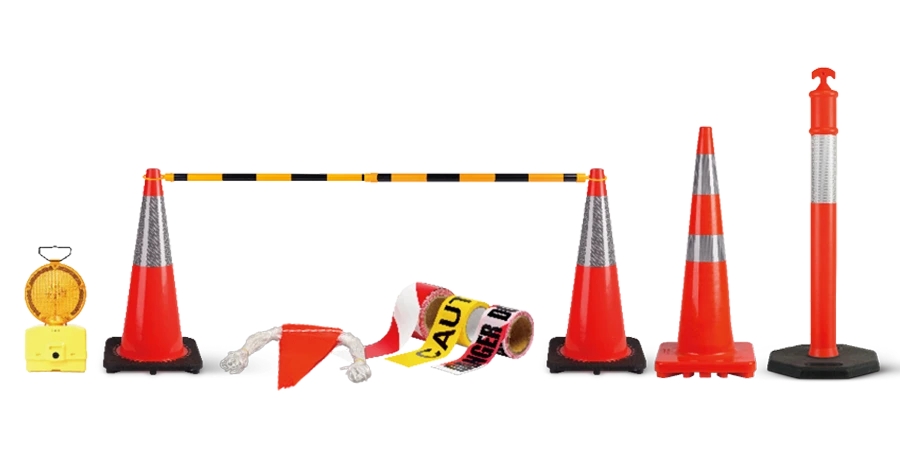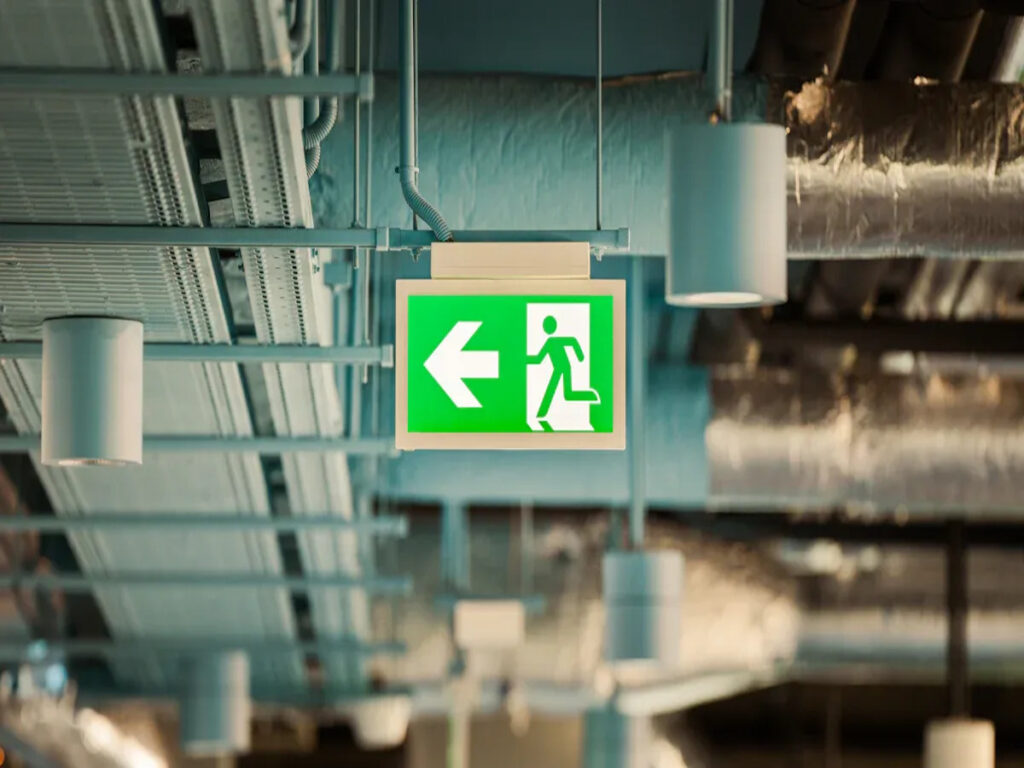
緊急事態, 時間は非常に重要です. Clear directions help people leave safely. Road traffic safety signs are crucial in dangerous places. They show the way during confusing times. These signs guide you to exits, keep you away from unsafe areas, and lead you to safety fast. Road traffic safety signs must be placed where they are easy to see. This is important even when it’s dark or stressful. Using these signs well can lower confusion and keep everyone safer.
OPTRAFFIC offers high-quality safety signs for sale, designed for maximum visibility and durability in critical environments. Whether for emergency response, 建設ゾーン, or general road safety, OPTRAFFIC safety signs help keep people safe when it matters most. 今日お問い合わせください to find the right signage for your safety needs.
What Happens During an Emergency Evacuation
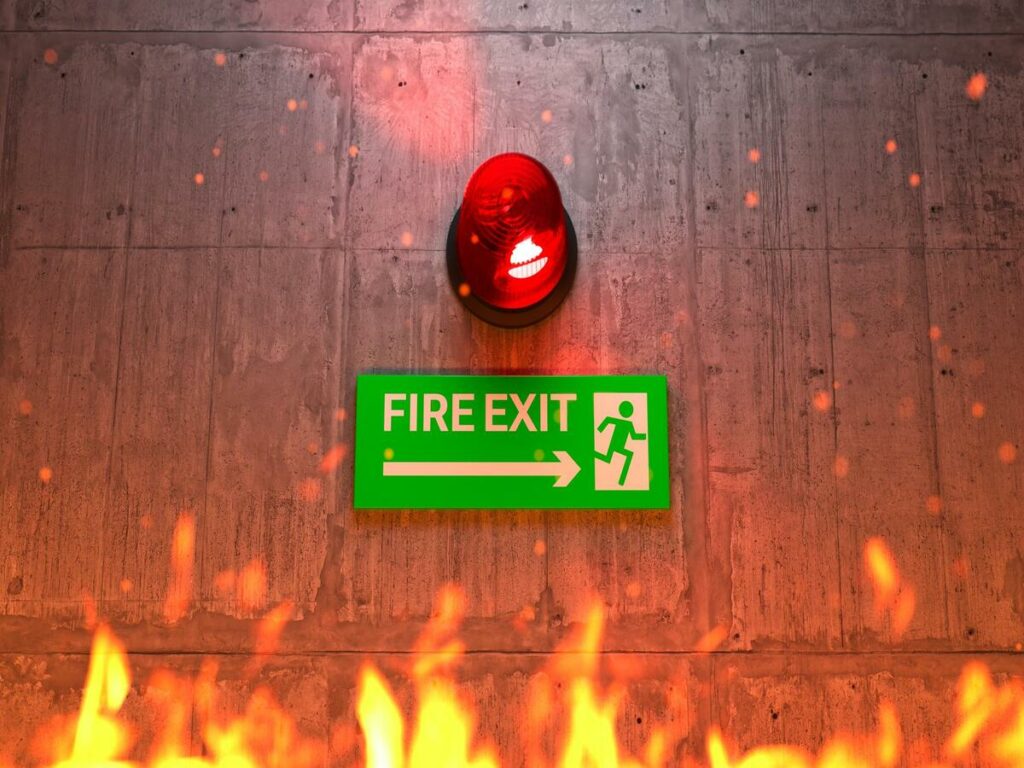
緊急事態はいつでも起こる可能性があります, so knowing what to do is key. Different emergencies need specific actions to keep everyone safe. Learning about these situations helps you act fast during evacuations.
Fires and Smoke Problems
Fires are common and spread quickly. They create smoke that blocks your view and makes breathing hard. You need clear signs to show the way out. Glow-in-the-dark or shiny signs near exits help you escape safely. これらの兆候は見やすいです, even in smoke-filled areas.
To get ready for fires, check for risks in your building. Plan escape routes and teach everyone where to go. Keep fire extinguishers and masks nearby. Use a headcount system to make sure everyone gets out.
Chemical Spills or Poisonous Gas Leaks
Chemical spills and gas leaks are dangerous. Toxic chemicals can spread in the air or on surfaces. などの警告サイン “立入禁止” keep you away from unsafe areas. OSHAルール require clear labels for dangerous materials to protect people. The HazCom 2012 standard helps workers understand chemical dangers.
During chemical emergencies, signs must show safe paths and meeting spots. Bright signs, like neon yellow-green, grab attention. Placing signs in the right spots helps people move away from danger quickly.
Natural Disasters (Earthquakes, 洪水, Storms)
Natural disasters like earthquakes, 洪水, and storms can cause confusion. Signs showing escape routes and meeting spots are very important. Many adults in the U.S. haven’t practiced disaster drills, so clear signs and plans are needed.
In disaster-prone areas, place signs at key spots like stairs or intersections. Raised signs work well in floods, and reflective ones help during storms. Putting signs in the right places keeps them useful, 厳しい状況でも.
Accidents Causing Immediate Danger (例えば。, Equipment Failure, Explosions)
Accidents like equipment failures or explosions can be very dangerous. These events often happen suddenly, giving little time to act. A clear plan is needed to guide everyone to safety. Road traffic safety signs are very helpful in these moments. They give quick and easy-to-see instructions.
When equipment breaks, it can cause fires or falling debris. Explosions can create shockwaves, making it hard to escape. Emergency exits should always be marked clearly to help people leave fast. のような標識 “立入禁止” stop you from going into unsafe areas. Glow-in-the-dark or shiny signs are useful when it’s smoky or dark.
To get ready for these emergencies, place safety signs in key spots. 例えば, put arrows near machines or risky areas. Use raised signs so they can be seen in crowded places. Practice evacuation drills often so everyone knows what to do. This helps people stay safe during accidents.
Think about what first responders need too. のような標識 “Emergency Vehicle Access Only” help them get there faster. Clear paths and marked exits make their job easier and save time. By using good signs and having a strong plan, you can lower risks and keep people safe during sudden accidents.
ヒント: Check your emergency exits and safety signs often. This makes sure they work well when you need them most.
Types of Road Traffic Safety Signs Used in Evacuation Contexts
Exit Directional Arrows
Exit arrows are very important during emergencies. They show people the way to exits or safe paths. These signs use simple arrows to point where to go. You can see them near doors, hallways, and stairs. This helps everyone find their way, even if they don’t know the building well.
To make them easier to see, these arrows often glow in the dark or use shiny materials. This helps during power outages or in dim areas. When used with emergency lights, they work even better to guide people to safety.
ヒント: Check exit arrows often to make sure they are clear and easy to see. This small check can save lives in emergencies.
“Evacuation Route” or “Assembly Point” Signs
Evacuation route signs are key for getting out safely. They guide people to safe paths and meeting spots. These signs are very helpful in big buildings or places with tricky layouts. They reduce confusion and help everyone leave quickly and safely.
- Why Evacuation Route Signs Are Important:
- They help people with disabilities, making safety plans fair for all.
- Emergency lights make them easier to see in bad situations.
- Following NFPA 101® rules shows how important they are for safety.
Assembly point signs show where to gather after leaving the building. These signs help groups stay together and check if everyone is safe. Bright colors like neon green or yellow make them stand out, 遠くからでも.
Emergency Vehicle Access Only
Emergency vehicle access signs help first responders get to the scene fast. These signs mark spots for fire trucks, 救急車, and other emergency vehicles. Keeping these areas clear is very important for quick help.
You’ll find these safety signs near entrances, 私道, or parking areas. Their big letters and bright colors make them easy to notice, even in busy times. これらの兆候に従うことによって, you help emergency teams save time and lives.
注記: Always keep emergency vehicle zones clear of anything blocking them. This simple step helps first responders act faster in emergencies.
立入禁止 / Restricted Zone Signs
Restricted zone signs are important for keeping people safe. These safety signs show areas that are unsafe or off-limits. You might see them near dangerous machines, 化学物質, or broken buildings. Following these signs helps you stay away from danger and avoid accidents.
These safety signs use bright colors like red and white to stand out. Big letters or symbols make them easy to understand from far away. 例えば, a “立入禁止” sign with a symbol tells everyone to stay out, 彼らの言語に関係なく. 緊急事態, these signs guide people to safe paths and reduce confusion.
It’s important to place restricted zone signs in the right spots. Put them at entrances to unsafe areas or near evacuation routes with risks. This helps people quickly know which way is safe and which is not. Check these signs often to make sure they are clear and easy to see.
ヒント: Use glow-in-the-dark or reflective materials for these signs. This helps people see them in the dark or during power outages.
Low-Visibility Area Markers (Glow-in-the-Dark or Reflective Signs)
Low-visibility markers help people find their way in dark places. These safety signs glow or reflect light, making them easy to see when it’s hard to look around. You can find them in stairways, ホール, or places where lights might go out during emergencies.
Glow-in-the-dark signs store light and shine in darkness. Reflective signs bounce back light from flashlights or emergency lamps. Both types help people follow safe paths, 見るのが難しいときでさえ.
Place these markers on walls, floors, and doors to show the way. 例えば, glowing arrows can point to exits, and reflective signs can warn about obstacles. Using these with other safety signs makes evacuations faster and safer.
Keep these signs in good shape by checking them often. Make sure they still glow or reflect well. Replace any broken or faded signs right away to keep everyone safe.
注記: Combine low-visibility markers with emergency lights for better results. This makes evacuation routes clear and easy to follow, 厳しい状況でも.
Strategic Placement of Road Traffic Safety Signs for Maximum Effectiveness
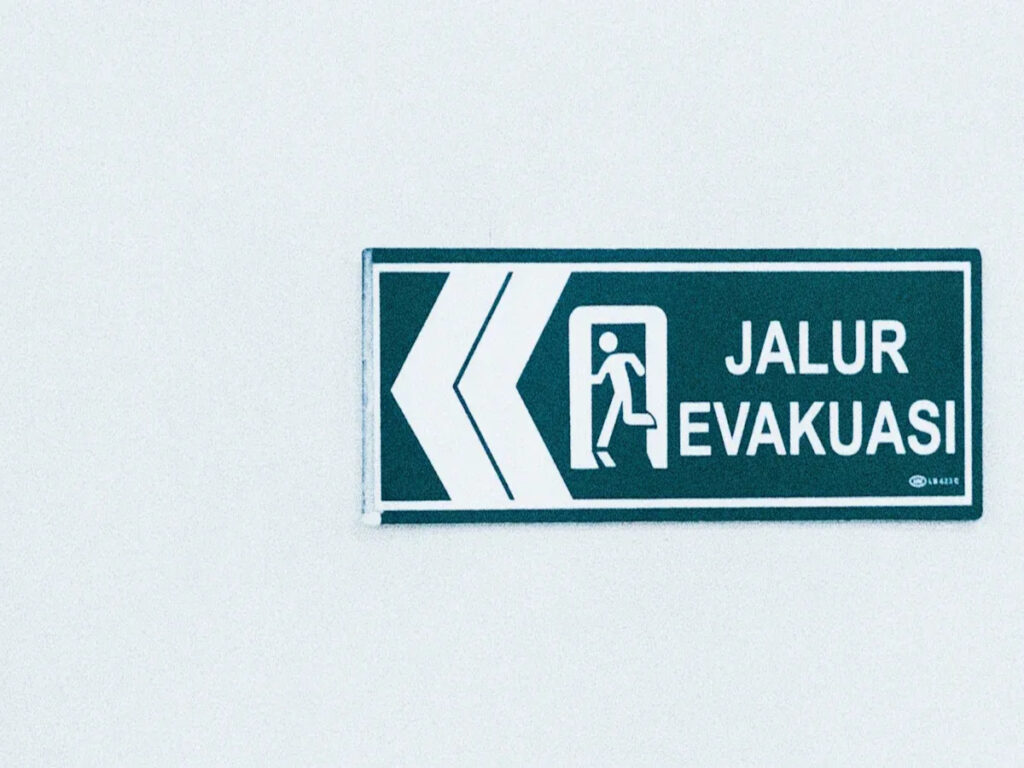
Exit Route Mapping Based on Building or Site Layout
Planning exit routes helps everyone leave safely in emergencies. Study the building layout to find the safest and quickest exits. Put signs in important spots like hallways, 階段, and doors. This helps people who don’t know the area find their way.
Use maps or pictures to show evacuation routes clearly. Highlight these paths with glowing or reflective signs. これにより、見やすくなります, even in dark or smoky areas. Check the layout often to ensure signs match any building changes.
ヒント: Test your signs in different conditions, like darkness or smoke, to ensure they work well.
Signage Placement at Decision Points and Intersections
Putting signs at intersections and decision points is very important. These spots can confuse people during emergencies. Clear signs help everyone stay calm and pick the right path.
- Signs at key spots make evacuations faster and easier.
- They help emergency workers reach the scene quickly.
- Clear directions reduce panic and guide people safely.
- Features like lights or sounds help those with special needs.
例えば, place arrows at hallway corners or near stairs. Use glowing or reflective materials so they’re visible in low light. This smart placement reduces delays and keeps paths clear.
Clear Delineation Between Evacuation Paths and Work Zones
Evacuation paths should stay separate from work areas to avoid danger. Use warning signs to mark risky spots. 例えば, 場所 “立入禁止” signs near machines or construction zones. This keeps people safe during emergencies.
Floor markings or barriers can also guide people to safe paths. These tools create clear boundaries between safe and unsafe areas. Check these markings often to make sure they are still visible and useful.
注意: Never block evacuation paths with objects or debris. Always keep these routes open and safe.
Elevated or Wall-Mounted Signs for Visibility in Crowds
Raised or wall signs are very helpful in emergencies. These signs stay visible, even in busy or crowded places. Putting them high up or on walls stops them from being blocked.
Indoor signs help people find exits quickly during emergencies. They guide both visitors and rescue teams to safety. Good signs can save lives in dangerous situations. To make sure they are easy to see, これらのルールに従ってください:
- Signs should stand out and look different from their background.
- Use the right size and bright colors for the space.
- Keep signs clear of anything that might block them.
| ルール | それが意味すること |
|---|---|
| 見やすい | Signs must stand out and be clear to notice. |
| Right Size | Signs should fit the space and use bold colors. |
| No Blockage | Nothing should hide or cover the signs. |
Raised signs work well in big spaces like gyms or factories. Wall signs are great for narrow places like halls or stairs. Both types help people see directions, カオスでも. Adding emergency lights makes them even better.
ヒント: Check raised and wall signs often to keep them clear and readable.
Consistency Between Signage and Emergency Response Plans
Matching signs with emergency plans is very important. Signs should show the same paths and steps as your safety plan. This helps people follow directions without getting confused.
Think about your building’s needs when making signs. 例えば, if you have meeting spots, use signs to mark them clearly. If some areas are unsafe, put warning signs there. Clear and matching signs help people stay calm and move safely.
Training is also key. Teach workers and visitors how to read the signs and follow the plan. Practice drills often to make sure everyone knows what to do. When people are prepared, they act better in emergencies.
警告: Mismatched signs can confuse people and slow them down. Always update signs when changing your safety plan.
Integrating Road Traffic Safety Signs with Emergency Preparedness Tools
Pairing Signs with Emergency Lighting Systems
Emergency lights and safety signs work together during evacuations. When power goes out, emergency lights brighten key areas. This makes it easier to see safety signs. Glow-in-the-dark or reflective signs work better with these lights. 例えば, exit arrows and “立入禁止” signs stay visible in dark or smoky places. They help guide people away from danger.
Bright emergency lights also help rescuers move quickly in buildings. クリア, lit signs reduce confusion and help people make better choices. To follow safety rules, test your lighting systems often. This ensures they work when you need them most.
Using Floor Markings and Delineators to Guide Movement
Floor markings and barriers help safety signs by showing clear paths. These tools separate safe routes from dangerous areas. 例えば, bright floor lines lead to exits, while barriers block unsafe zones.
Using reflective or glowing materials for floor markings helps in dim light. This is useful in big buildings or outdoor spaces where signs are hard to see. Check these markings often to keep them clear and safe.
Color Coordination Between Safety Equipment and Exit Paths
Matching colors helps in emergencies. Use the same colors for safety tools and nearby signs. 例えば, red can mark fire tools, and green can show exit paths. This system makes it easier to find what you need fast.
Using the same color rules worldwide helps everyone understand safety plans. The table below shows how combining signs with other tools improves safety:
| 利点 | Example of Integration |
|---|---|
| Real-time information relay | Smart signs showing weather updates and alerts |
| Enhanced driver awareness | Warnings about slippery roads in bad weather |
| Effective communication of alerts | Evacuation messages and road closures on digital boards |
| Improved decision-making | Speed warnings during sudden storms |
By using signs, ライト, and colors together, you create a safer place. This reduces risks and follows safety rules.
Regulatory Guidelines and Compliance for Emergency Signage
OSHA and NFPA Rules for Emergency Signs (私たち。)
米国で, OSHA and NFPA have strict rules for safety signs. OSHA (労働安全衛生局) ensures signs label dangers and show evacuation paths clearly. NFPA (National Fire Protection Association) focuses on using standard symbols and colors to explain risks.
OSHA uses colors to show hazard levels. 赤は危険を意味します, orange means warning, and yellow means caution. These colors help people quickly understand risks. The table below shows how these colors are used:
| 色 | 意味 | 例 |
|---|---|---|
| 赤 | 危険 – serious risks causing major harm | Fire alarms, emergency stop buttons |
| オレンジ | 警告 – risks that could cause injuries | Signs near machines or dangerous equipment |
| 黄色 | 注意 – risks causing minor injuries | Traffic area warnings |
| 青 | 知らせ – no injury risk, just information | General info signs |
Checking signs often ensures they follow these rules. This keeps everyone safe and ready for emergencies.
ISO 7010 Symbols for Global Understanding
ISO 7010 symbols are used worldwide for safety signs. These symbols use simple pictures to show messages, so anyone can understand them. 例えば, the “出口” symbol shows a person running to a door. This is clear no matter what language you speak. 時々, text is added to make the message even clearer.
ISOを使用します 7010 symbols makes safety signs the same everywhere. This helps people quickly find exits and avoid danger. Adding labels and colors improves understanding and reduces confusion during emergencies.
Matching Signs with Emergency Plans
Safety signs should match your emergency plan. Signs must show the same paths and steps as the plan. 例えば, if your plan has meeting spots, use signs to mark them clearly. This helps everyone know where to go and what to do.
Review your emergency plan and signs regularly to keep them updated. This ensures they follow OSHA and NFPA rules. Practice drills and training sessions help everyone learn the signs and routes. This makes responses faster during real emergencies.
ヒント: Test your signs in different conditions, like darkness or smoke, to make sure they work well.
Common Mistakes to Avoid in Emergency Signage
Signs That Look Different Across Locations
When signs look different, it confuses people during emergencies. If signs use different colors, 形, or placements, it’s harder to understand them. This can slow down evacuations and make things more dangerous. 例えば, at Willamalane Park, text-only signs didn’t work well. They switched to clear pictures and matching designs, これで物事がより安全になりました.
これを修正するために, use the same designs and symbols everywhere. ISO 7010 symbols are easy to recognize worldwide. Keeping signs consistent helps everyone, 訪問者でさえ, find safety quickly.
Signs That Are Hard to See or Not Lit
If signs are blocked or not lit, they can’t help in emergencies. People might panic or go the wrong way if they can’t see exit signs. Glow-in-the-dark or reflective signs work well in dark places, but they must stay visible. A study found that bright, clear firefighting signs were easier to understand. This shows why good lighting and placement are so important.
Check signs often to make sure nothing is hiding them, like furniture or decorations. Put them high enough to see in crowded areas. Adding emergency lights makes signs easier to spot during power outages or smoke.
Not Checking or Fixing Signs Regularly
Old or broken signs don’t work well in emergencies. 時間とともに, 彼らは色褪せることができる, 壊す, or stop glowing. This makes them hard to see when needed most. In Willoughby Parks, lifeguards cut emergencies by 55% after fixing their safety signs. This shows how keeping signs in good shape can save lives.
Make a schedule to check signs often. Test glow-in-the-dark and reflective signs in dark or smoky conditions. Replace broken signs right away to keep people safe. Regular maintenance makes sure signs work when they’re needed most.
ヒント: Use a checklist to inspect and test signs. This small step can improve safety and prevent problems.
Mismatched Routes Between Signage and Evacuation Training
If signs and training don’t match, people get confused. 緊急時に, they trust signs to guide them. But if signs show different paths than drills, panic can happen. This slows down evacuations and puts lives in danger.
これを修正するために, make sure signs match training routes. Check your emergency plan and compare it to the signs. If they don’t align, update the signs or change the training. This ensures everyone knows the correct way to safety.
ヒント: Practice evacuation drills to see if signs work well. Watch for spots where people pause or go the wrong way. Add clearer signs or improve training in those areas.
Keep everything consistent. Use the same colors, シンボル, and words in signs and training. 例えば, if training mentions a green “Assembly Point” サイン, place that exact sign in the right spot. This helps people trust and follow the signs.
Buildings and routes change over time, so review signs often. Update them to match new layouts. Ask employees for feedback during reviews to find problems early.
注記: Even trained people can get confused by mismatched signs. Aligning signs with training makes evacuations faster and safer.
By matching signs and training, you help people stay calm and move quickly. This simple step can save lives when every second matters.
The Role of Road Traffic Safety Signs in Reducing Panic and Confusion
Reassuring Visual Cues in Stressful Situations
Emergencies can be scary and confusing. Clear safety signs help people feel calmer. These signs use bright colors and simple pictures to show safe paths. 例えば, a glowing arrow pointing to an exit helps you stay focused, even in dark or smoky areas.
Studies show that picture-based signs work better than words. They share information faster and are easier to remember. This is very helpful when there’s no time to read. Picture signs also work for everyone, 彼らがどんな言語を話しても.
| 重要な調査結果 | 説明 |
|---|---|
| Understanding Safety Signs | Signs break language barriers, helping everyone understand during emergencies. |
| Visual Communication | Pictures share more details quickly and are easier to recall than words. |
| 間違いが少ない | Clear signs improve safety awareness and reduce errors in emergencies. |
By giving clear and easy-to-see directions, safety signs lower fear and help people make smarter choices during emergencies.
Improving Response Time and Crowd Movement Efficiency
Every second matters in emergencies. Good safety signs help people find exits or safe spots faster. Simple designs and familiar pictures make signs easier to understand, so you can act quickly.
Research shows that age, 教育, and experience affect how fast people respond to signs. Younger people and those with more experience react faster. But the clearness of the signs is the most important factor for everyone.
| メトリックタイプ | 説明 |
|---|---|
| 年 | Younger people and middle-aged workers react faster to signs. |
| Education Level | People with higher education understand safety signs better. |
| Work Experience | Familiarity with signs improves reaction time and understanding. |
| Sign Simplicity | Easy-to-read and familiar signs help everyone respond faster. |
Clear and simple signs help people move quickly and avoid crowded areas during evacuations.
Supporting First Responders and Emergency Crews
Safety signs don’t just help people—they also guide emergency teams. のような標識 “Emergency Vehicle Access Only” keep paths open for fire trucks and ambulances. This saves time and helps responders get to the scene faster.
Signs also help responders in new buildings. 例えば, glowing exit signs or meeting point markers help them find survivors quickly. 混乱を減らすことで, these signs make rescue efforts faster and more effective.
Following safety signs keeps you safe and helps emergency teams do their job better. 一緒に, these actions create a safer place for everyone.
Getting out safely starts with good road traffic safety signs. These road traffic safety signs show people where to go and lower confusion. They also help everyone react faster during emergencies. Signs must be easy to see and work well in tough situations.
注記: Smart signs make safety better by sharing live updates. They can show weather changes or road dangers. Picture road traffic safety signs are helpful because they work for all languages.
Signs should match emergency plans and how people move in real life. Testing and fixing road traffic safety signs often keeps them ready to use. Clear and matching signs make places safer for everyone.
Want to explore the full range of what traffic safety signs can do—from regulation to real-time guidance?
ブログをご覧ください: “交通安全標識の機能は何ですか? 規制から指導までの全範囲の概要” to learn more.
よくある質問
Why are clear walkway signs important in emergencies?
Clear walkway signs help people find safe paths fast. They lower confusion and keep you away from danger. These signs also guide first responders to exits or meeting spots quickly. Good placement and easy-to-understand symbols make them more helpful.
How do rules make safety signs better?
Rules make sure safety signs follow the same designs, 色, およびシンボル. これにより理解しやすくなります, even when you’re stressed. 例えば, ISO rules use simple symbols to warn about dangers, helping you stay safe.
Where should walkway signs be placed?
Put walkway signs at important spots like stairs, 出口, and corners. Signs on walls or raised high work well in crowded places. Glow-in-the-dark or shiny signs help people see them in dim light, showing the safest way.
How do safety signs warn about dangers?
Safety signs use bright colors, 大きな文字, and clear symbols to stand out. 例えば, a red “立入禁止” sign tells you to avoid unsafe areas. These road traffic safety signs lower risks and guide you to safety during emergencies.
Why are symbols on signs useful?
Symbols make road traffic safety signs easy to understand for everyone, 言語に関係なく. They give important information fast, helping you act quickly in emergencies. 例えば, an arrow pointing to an exit shows the way out, カオスでも.
